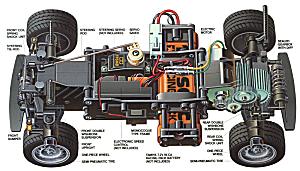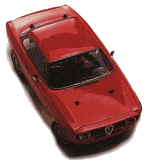
(Click on it to view it at 800X457)
 First we take a deep, good look in the construction
manual...
First we take a deep, good look in the construction
manual...
 |
|
(Click on it to view it at 800X457) |
 The chassis this Alfa Romeo is the same one as that used under the
bodyshells of the Monte Carlo Mini Cooper, the Fiat Abarth 595,
the VW Beetle, the Honda SS800, the Mazda Miata and the
Alpine Renault A110... It's actually the M-02-M, with rear wheel
drive this time around. It's a highly adaptable chassis, motivating in fact
either FWD or RWD vehicles. Of course, you can easily understand which of the
above fits where...
The chassis this Alfa Romeo is the same one as that used under the
bodyshells of the Monte Carlo Mini Cooper, the Fiat Abarth 595,
the VW Beetle, the Honda SS800, the Mazda Miata and the
Alpine Renault A110... It's actually the M-02-M, with rear wheel
drive this time around. It's a highly adaptable chassis, motivating in fact
either FWD or RWD vehicles. Of course, you can easily understand which of the
above fits where...